Central Auckland, East Auckland, South Auckland, West Auckland, North Auckland > Private Hospitals & Specialists > Allevia Health >
Allevia Orthopaedic Surgery
Private Surgical Service, Orthopaedics
Consultants
Note: Please note below that some people are not available at all locations.
-
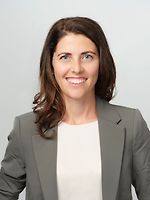
Dr Charlotte Allen
Orthopaedic Surgeon
Available at Allevia Hospital Ascot, 90 Green Lane East, Remuera, Auckland
-
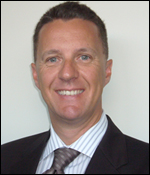
Mr Craig Ball
Orthopaedic Surgeon
Available at Allevia Hospital Ascot, 90 Green Lane East, Remuera, Auckland
-
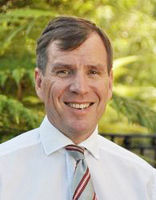
Mr Michael Barnes
Orthopaedic Surgeon
Available at Allevia Hospital Epsom, 98 Mountain Road, Epsom, Auckland
-

Mr Jarome Bentley
Orthopaedic Surgeon
Available at all locations.
-
Mr Hugh Blackley
Orthopaedic Surgeon
Available at Allevia Hospital Ascot, 90 Green Lane East, Remuera, Auckland
-

Mr Matthew Boyle
Orthopaedic Surgeon
Available at Allevia Hospital Ascot, 90 Green Lane East, Remuera, Auckland
-
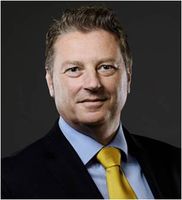
Mr Clayton Brown
Orthopaedic Surgeon
Available at Allevia Hospital Ascot, 90 Green Lane East, Remuera, Auckland
-
Mr Michael Caughey
Orthopaedic Surgeon
Available at Allevia Hospital Epsom, 98 Mountain Road, Epsom, Auckland
-

Mr Clayton Chan
Orthopaedic Surgeon
Available at Allevia Hospital Epsom, 98 Mountain Road, Epsom, Auckland
-
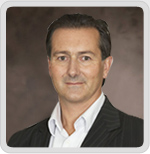
Mr Mark Clatworthy
Orthopaedic Surgeon
Available at Allevia Hospital Ascot, 90 Green Lane East, Remuera, Auckland
-

Mr Brendan Coleman
Orthopaedic Surgeon
Available at Allevia Hospital Epsom, 98 Mountain Road, Epsom, Auckland
-
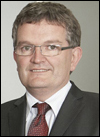
Mr Haemish Crawford
Orthopaedic Surgeon
Available at all locations.
-

Mr Adam Dalgleish
Orthopaedic Surgeon
Available at Allevia Hospital Ascot, 90 Green Lane East, Remuera, Auckland
-
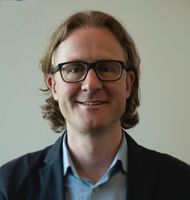
Mr Matt Debenham
Orthopaedic Surgeon
Available at Allevia Hospital Ascot, 90 Green Lane East, Remuera, Auckland
-
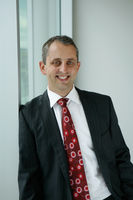
Mr Angus Don
Orthopaedic Surgeon
Available at Allevia Hospital Ascot, 90 Green Lane East, Remuera, Auckland
-
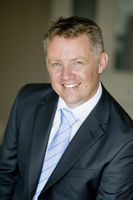
Mr Adam Durrant
Orthopaedic Surgeon
Available at Allevia Hospital Ascot, 90 Green Lane East, Remuera, Auckland
-
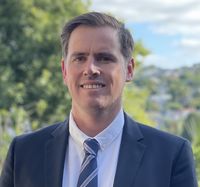
Mr John English
Orthopaedic Surgeon
Available at Allevia Hospital Ascot, 90 Green Lane East, Remuera, Auckland
-

Mr Duncan Ferguson
Orthopaedic Surgeon
Available at Allevia Hospital Epsom, 98 Mountain Road, Epsom, Auckland
-

Dr John Ferguson
Orthopaedic Surgeon
Available at Allevia Hospital Ascot, 90 Green Lane East, Remuera, Auckland
-

Mr Antony Field
Orthopaedic Surgeon
Available at Allevia Hospital Ascot, 90 Green Lane East, Remuera, Auckland
-

Mr Michael Flint
Orthopaedic Surgeon
Available at Allevia Hospital Ascot, 90 Green Lane East, Remuera, Auckland
-
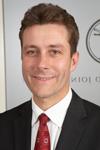
Mr Michael Foster
Orthopaedic Surgeon
Available at Allevia Hospital Ascot, 90 Green Lane East, Remuera, Auckland
-

Mr Chris Fougere
Orthopaedic Surgeon
Available at Allevia Hospital Epsom, 98 Mountain Road, Epsom, Auckland
-

Mr Nick Gormack
Orthopaedic Surgeon
Available at all locations.
-
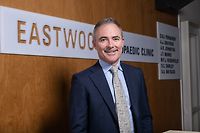
Mr Andrew Graydon
Orthopaedic Surgeon
Available at Allevia Hospital Epsom, 98 Mountain Road, Epsom, Auckland
-
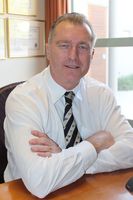
Mr Alastair Hadlow
Orthopaedic Surgeon
Available at all locations.
-
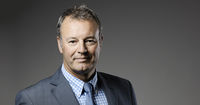
Mr Michael Hanlon
Orthopaedic Surgeon
Available at Allevia Hospital Epsom, 98 Mountain Road, Epsom, Auckland
-
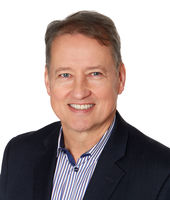
Mr Wolfgang Heiss-Dunlop
Orthopaedic Surgeon
Available at Allevia Hospital Ascot, 90 Green Lane East, Remuera, Auckland
-

Mr Peter Hucker
Orthopaedic Surgeon
Available at Allevia Hospital Ascot, 90 Green Lane East, Remuera, Auckland
-
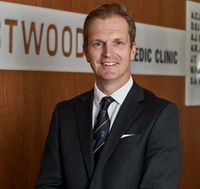
Mr Andrew Johnston
Orthopaedic Surgeon
Available at all locations.
-
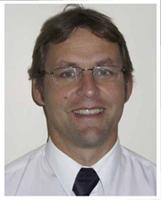
Mr Kevin Karpik
Orthopaedic Surgeon
Available at all locations.
-
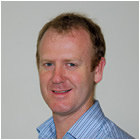
Mr S Mills
Orthopaedic Surgeon
Available at Allevia Hospital Ascot, 90 Green Lane East, Remuera, Auckland
-
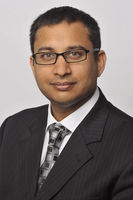
Mr Dean Mistry
Orthopaedic Surgeon
Available at Allevia Hospital Ascot, 90 Green Lane East, Remuera, Auckland
-

Mr Paul Monk
Orthopaedic Surgeon
Available at all locations.
-

Mr Jacob Munro
Orthopaedic Surgeon
Available at Allevia Hospital Epsom, 98 Mountain Road, Epsom, Auckland
-
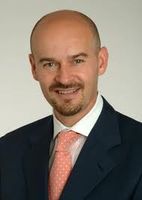
Associate Professor Pitto
Orthopaedic Surgeon
Available at Allevia Hospital Epsom, 98 Mountain Road, Epsom, Auckland
-
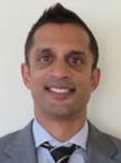
Mr Rupesh Puna
Orthopaedic Surgeon
Available at Allevia Hospital Epsom, 98 Mountain Road, Epsom, Auckland
-
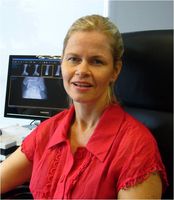
Dr Helen Rawlinson
Orthopaedic Surgeon
Available at Allevia Hospital Epsom, 98 Mountain Road, Epsom, Auckland
-

Mr James Recordon
Orthopaedic Surgeon
Available at Allevia Hospital Ascot, 90 Green Lane East, Remuera, Auckland
-
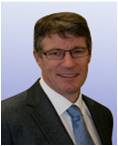
Mr Peter Robertson
Orthopaedic Surgeon
Available at Allevia Hospital Epsom, 98 Mountain Road, Epsom, Auckland
-

Mr Michael Rosenfeldt
Orthopaedic Surgeon
Available at Allevia Hospital Epsom, 98 Mountain Road, Epsom, Auckland
-

Mr Janus Schaumkel
Orthopaedic Surgeon
Available at Allevia Hospital Ascot, 90 Green Lane East, Remuera, Auckland
-

Mr Anand Segar
Orthopaedic Spine Surgeon
Available at all locations.
-
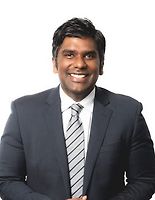
Mr Suren Senthi
Orthopaedic Surgeon
Available at Allevia Hospital Ascot, 90 Green Lane East, Remuera, Auckland
-

Mr Ivan Spika
Orthopaedic Surgeon
Available at Allevia Hospital Ascot, 90 Green Lane East, Remuera, Auckland
-
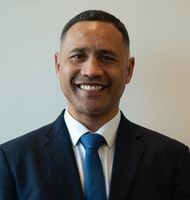
Mr Jeremy Stanley
Orthopaedic Surgeon
Available at Allevia Hospital Ascot, 90 Green Lane East, Remuera, Auckland
-

Mr Richard Street
Orthopaedic Surgeon
Available at Allevia Hospital Epsom, 98 Mountain Road, Epsom, Auckland
-
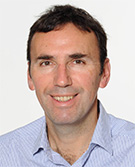
Mr Matthew Tomlinson
Orthopaedic Surgeon
Available at Allevia Hospital Epsom, 98 Mountain Road, Epsom, Auckland
-

Mr Bruce Twaddle
Orthopaedic Surgeon
Available at all locations.
-
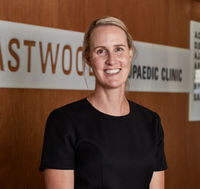
Stephanie Van Dijck
Orthopaedic Surgeon
Available at all locations.
-
Mr Mark Wright
Orthopaedic Surgeon
Available at Allevia Hospital Epsom, 98 Mountain Road, Epsom, Auckland
Procedures / Treatments
Two or three small incisions (cuts) are made in the ankle and a small telescopic instrument with a tiny camera attached (arthroscope) is inserted. This allows the surgeon to look inside the joint, identify problems and, in some cases, operate. Tiny instruments can be passed through the arthroscope to remove bony spurs, damaged cartilage or inflamed tissue.
Two or three small incisions (cuts) are made in the ankle and a small telescopic instrument with a tiny camera attached (arthroscope) is inserted. This allows the surgeon to look inside the joint, identify problems and, in some cases, operate. Tiny instruments can be passed through the arthroscope to remove bony spurs, damaged cartilage or inflamed tissue.
Two or three small incisions (cuts) are made in the ankle and a small telescopic instrument with a tiny camera attached (arthroscope) is inserted. This allows the surgeon to look inside the joint, identify problems and, in some cases, operate. Tiny instruments can be passed through the arthroscope to remove bony spurs, damaged cartilage or inflamed tissue.
An incision (cut) is made in the front of, and several smaller cuts on the outside of, the ankle. The damaged ankle joint is replaced with a metal and plastic implant.
An incision (cut) is made in the front of, and several smaller cuts on the outside of, the ankle. The damaged ankle joint is replaced with a metal and plastic implant.
An incision (cut) is made in the front of, and several smaller cuts on the outside of, the ankle. The damaged ankle joint is replaced with a metal and plastic implant.
Carpal Tunnel Syndrome is caused by a pinched nerve in the wrist that causes tingling, numbness and pain in your hand. Surgery to relieve carpal tunnel syndrome involves making an incision (cut) from the middle of the palm of your hand to your wrist. Tissue that is pressing on the nerve is then cut to release the pressure. Carpal Tunnel Syndrome is caused by a pinched nerve in the wrist that causes tingling, numbness and pain in your hand. Surgery to relieve carpal tunnel syndrome involves making an incision (cut) from the middle of the palm of your hand to your wrist. Tissue that is pressing on the nerve is then cut to release the pressure.
Carpal Tunnel Syndrome is caused by a pinched nerve in the wrist that causes tingling, numbness and pain in your hand. Surgery to relieve carpal tunnel syndrome involves making an incision (cut) from the middle of the palm of your hand to your wrist. Tissue that is pressing on the nerve is then cut to release the pressure. Carpal Tunnel Syndrome is caused by a pinched nerve in the wrist that causes tingling, numbness and pain in your hand. Surgery to relieve carpal tunnel syndrome involves making an incision (cut) from the middle of the palm of your hand to your wrist. Tissue that is pressing on the nerve is then cut to release the pressure.
Carpal Tunnel Syndrome is caused by a pinched nerve in the wrist that causes tingling, numbness and pain in your hand.
Surgery to relieve carpal tunnel syndrome involves making an incision (cut) from the middle of the palm of your hand to your wrist. Tissue that is pressing on the nerve is then cut to release the pressure.
Discectomy is an operation to remove part or all of a damaged spinal disc that is pressing on nerves, helping to relieve pain and improve movement. Microdiscectomy:a microscope is used by the surgeon to guide tiny instruments to remove the disc or disc fragments. Discectomy is an operation to remove part or all of a damaged spinal disc that is pressing on nerves, helping to relieve pain and improve movement. Microdiscectomy:a microscope is used by the surgeon to guide tiny instruments to remove the disc or disc fragments.
Discectomy is an operation to remove part or all of a damaged spinal disc that is pressing on nerves, helping to relieve pain and improve movement. Microdiscectomy:a microscope is used by the surgeon to guide tiny instruments to remove the disc or disc fragments. Discectomy is an operation to remove part or all of a damaged spinal disc that is pressing on nerves, helping to relieve pain and improve movement. Microdiscectomy:a microscope is used by the surgeon to guide tiny instruments to remove the disc or disc fragments.
Discectomy is an operation to remove part or all of a damaged spinal disc that is pressing on nerves, helping to relieve pain and improve movement.
Microdiscectomy:a microscope is used by the surgeon to guide tiny instruments to remove the disc or disc fragments.
Small incisions (cuts) are made in the hip area and a small telescopic instrument with a tiny camera attached (arthroscope) is inserted. This allows the surgeon to look inside the joint, identify problems and, in some cases, operate. Tiny instruments can be passed through the arthroscope to remove loose, damaged or inflamed tissue.
Small incisions (cuts) are made in the hip area and a small telescopic instrument with a tiny camera attached (arthroscope) is inserted. This allows the surgeon to look inside the joint, identify problems and, in some cases, operate. Tiny instruments can be passed through the arthroscope to remove loose, damaged or inflamed tissue.
Small incisions (cuts) are made in the hip area and a small telescopic instrument with a tiny camera attached (arthroscope) is inserted. This allows the surgeon to look inside the joint, identify problems and, in some cases, operate. Tiny instruments can be passed through the arthroscope to remove loose, damaged or inflamed tissue.
An incision (cut) is made on the side of the thigh to allow the surgeon access to the hip joint. The diseased and damaged parts of the hip joint are removed and replaced with smooth, artificial metal ‘ball’ and plastic ‘socket’ parts. An incision (cut) is made on the side of the thigh to allow the surgeon access to the hip joint. The diseased and damaged parts of the hip joint are removed and replaced with smooth, artificial metal ‘ball’ and plastic ‘socket’ parts.
An incision (cut) is made on the side of the thigh to allow the surgeon access to the hip joint. The diseased and damaged parts of the hip joint are removed and replaced with smooth, artificial metal ‘ball’ and plastic ‘socket’ parts. An incision (cut) is made on the side of the thigh to allow the surgeon access to the hip joint. The diseased and damaged parts of the hip joint are removed and replaced with smooth, artificial metal ‘ball’ and plastic ‘socket’ parts.
An incision (cut) is made on the side of the thigh to allow the surgeon access to the hip joint. The diseased and damaged parts of the hip joint are removed and replaced with smooth, artificial metal ‘ball’ and plastic ‘socket’ parts.
Several small incisions (cuts) are made on the knee through which is inserted a small telescopic instrument with a tiny camera attached (arthroscope). This allows the surgeon to look inside the joint, identify problems and, in some cases, make repairs to damaged tissue. Several small incisions (cuts) are made on the knee through which is inserted a small telescopic instrument with a tiny camera attached (arthroscope). This allows the surgeon to look inside the joint, identify problems and, in some cases, make repairs to damaged tissue.
Several small incisions (cuts) are made on the knee through which is inserted a small telescopic instrument with a tiny camera attached (arthroscope). This allows the surgeon to look inside the joint, identify problems and, in some cases, make repairs to damaged tissue. Several small incisions (cuts) are made on the knee through which is inserted a small telescopic instrument with a tiny camera attached (arthroscope). This allows the surgeon to look inside the joint, identify problems and, in some cases, make repairs to damaged tissue.
Several small incisions (cuts) are made on the knee through which is inserted a small telescopic instrument with a tiny camera attached (arthroscope). This allows the surgeon to look inside the joint, identify problems and, in some cases, make repairs to damaged tissue.
An incision (cut) is made on the front of the knee to allow the surgeon access to the knee joint. The damaged and painful areas of the thigh bone (femur) and lower leg bone (tibia), including the knee joint, are removed and replaced with metal and plastic parts.
An incision (cut) is made on the front of the knee to allow the surgeon access to the knee joint. The damaged and painful areas of the thigh bone (femur) and lower leg bone (tibia), including the knee joint, are removed and replaced with metal and plastic parts.
An incision (cut) is made on the front of the knee to allow the surgeon access to the knee joint. The damaged and painful areas of the thigh bone (femur) and lower leg bone (tibia), including the knee joint, are removed and replaced with metal and plastic parts.
Several small incisions (cuts) are made in the shoulder through which is inserted a small telescopic instrument with a tiny camera attached (arthroscope). The surgeon is then able to remove any bony spurs or inflamed tissue and mend torn tendons of the rotator cuff group. Several small incisions (cuts) are made in the shoulder through which is inserted a small telescopic instrument with a tiny camera attached (arthroscope). The surgeon is then able to remove any bony spurs or inflamed tissue and mend torn tendons of the rotator cuff group.
Several small incisions (cuts) are made in the shoulder through which is inserted a small telescopic instrument with a tiny camera attached (arthroscope). The surgeon is then able to remove any bony spurs or inflamed tissue and mend torn tendons of the rotator cuff group. Several small incisions (cuts) are made in the shoulder through which is inserted a small telescopic instrument with a tiny camera attached (arthroscope). The surgeon is then able to remove any bony spurs or inflamed tissue and mend torn tendons of the rotator cuff group.
Several small incisions (cuts) are made in the shoulder through which is inserted a small telescopic instrument with a tiny camera attached (arthroscope). The surgeon is then able to remove any bony spurs or inflamed tissue and mend torn tendons of the rotator cuff group.
This surgery involves making several small incisions (cuts) on the shoulder through which is inserted a small telescopic instrument with a tiny camera attached (arthroscope). This allows the surgeon to look inside the shoulder, identify problems and, in some cases, make repairs to damaged tissue. This surgery involves making several small incisions (cuts) on the shoulder through which is inserted a small telescopic instrument with a tiny camera attached (arthroscope). This allows the surgeon to look inside the shoulder, identify problems and, in some cases, make repairs to damaged tissue.
This surgery involves making several small incisions (cuts) on the shoulder through which is inserted a small telescopic instrument with a tiny camera attached (arthroscope). This allows the surgeon to look inside the shoulder, identify problems and, in some cases, make repairs to damaged tissue. This surgery involves making several small incisions (cuts) on the shoulder through which is inserted a small telescopic instrument with a tiny camera attached (arthroscope). This allows the surgeon to look inside the shoulder, identify problems and, in some cases, make repairs to damaged tissue.
This surgery involves making several small incisions (cuts) on the shoulder through which is inserted a small telescopic instrument with a tiny camera attached (arthroscope). This allows the surgeon to look inside the shoulder, identify problems and, in some cases, make repairs to damaged tissue.
An incision (cut) is made over the relevant part of the spine. Two or more vertebrae (the small bones that make up the spinal column) are fused together with bone grafts and/or metal rods to form a single bone. An incision (cut) is made over the relevant part of the spine. Two or more vertebrae (the small bones that make up the spinal column) are fused together with bone grafts and/or metal rods to form a single bone.
An incision (cut) is made over the relevant part of the spine. Two or more vertebrae (the small bones that make up the spinal column) are fused together with bone grafts and/or metal rods to form a single bone. An incision (cut) is made over the relevant part of the spine. Two or more vertebrae (the small bones that make up the spinal column) are fused together with bone grafts and/or metal rods to form a single bone.
An incision (cut) is made over the relevant part of the spine. Two or more vertebrae (the small bones that make up the spinal column) are fused together with bone grafts and/or metal rods to form a single bone.
An incision (cut) is made over the damaged tendon. The damaged ends of the tendon are sewn together and, if necessary, reattached to surrounding tissue.
An incision (cut) is made over the damaged tendon. The damaged ends of the tendon are sewn together and, if necessary, reattached to surrounding tissue.
An incision (cut) is made over the damaged tendon. The damaged ends of the tendon are sewn together and, if necessary, reattached to surrounding tissue.
Disability Assistance
Wheelchair access, Mobility parking space
Parking
Mobility parking and wheelchair access are available.
Website
Contact Details
Allevia Hospital Ascot, 90 Green Lane East, Remuera, Auckland
Central Auckland
-
Phone
(09) 520 9500
-
Fax
(09) 520 9501
Website
Was this page helpful?
This page was last updated at 11:28AM on April 4, 2025. This information is reviewed and edited by Allevia Orthopaedic Surgery.

